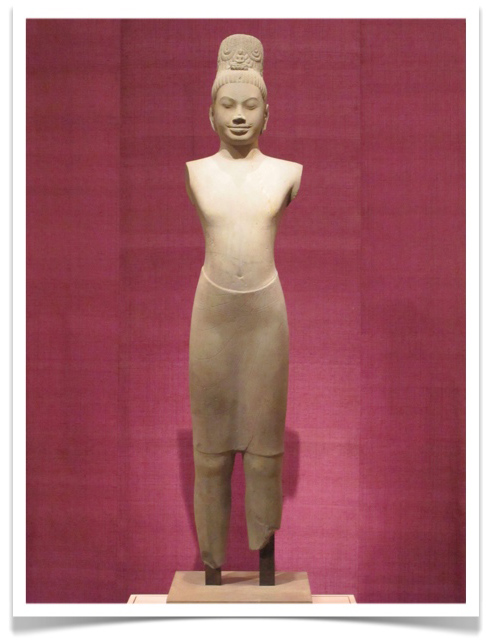Avalokiteshvara II
 Friday, August 29, 2014 at 12:17PM
Friday, August 29, 2014 at 12:17PM 
Lovely Chinese statue of Avalokiteshvara at the Cincinnati Art Museum. Western Xia Dynasty (1038 - 1227), wood with traces of pigment and gilding.
If you see books or music or tools on this site that you would like to buy through Amazon, click here and thus i have seen will get a small percentage of the purchase price of the item. Thank you.
The Elements of Typographic Style
Patagonia Synchilla Snap-T Pullover
Minding the Earth, Mending the Word: Zen and the Art of Planetary Crisis
North Face Base Camp Duffel (Medium)
 Friday, August 29, 2014 at 12:17PM
Friday, August 29, 2014 at 12:17PM 
Lovely Chinese statue of Avalokiteshvara at the Cincinnati Art Museum. Western Xia Dynasty (1038 - 1227), wood with traces of pigment and gilding.
 Avalokiteshvara,
Avalokiteshvara,  Cincinnati Art Museum in
Cincinnati Art Museum in  Art,
Art,  Dharma |
Dharma |  Share Article |
Share Article |  Email Article |
Email Article |  Print Article
Print Article  Thursday, May 24, 2012 at 10:52AM
Thursday, May 24, 2012 at 10:52AM 
Is the Bodhisattva who:
"doing deep Prajna Paramita perceived the emptiness of all five conditions (skandhas) and was freed of pain". The record and pithy explanation of his/her deep realization, The Heart of the Perfection of Great Wisdom Sutra, is chanted daily in many Zen centers.
[NOTE: Exquisite statue is willow wood with traces of pigment from 11th century China. The decidedly relaxed posture of the Bodhisattva with right knee raised and the left leg crossed before the body is said to represent the "Water Moon" manifestation. Photographed in The Metropolitan Museum of Art].
 Thursday, March 3, 2011 at 9:26AM
Thursday, March 3, 2011 at 9:26AM 
I wouldn't have known without the label. This beautifully rendered sandstone statue from late 7th century Cambodia (Khmer Empire, pre-Angkor Period), sans multiple arms, layers of necklaces, flowing white robes, vase of pure water, wish-granting jewel, or willow branch, and of ambivalent sexuality - is Avalokiteshvara, the bodhisattva of compassion (see Quan Ăm, Om Mani Padme Hum) and one of the most widely revered archetypes in Mahayana Buddhism.
"Avalokiteshvara Bodhisattva doing deep Prajna Paramita
perceived the emptiness of all five conditions,
and was freed of pain..."
-The Heart of the Perfection of Great Wisdom Sutra
[NOTE: Those who are visiting Bodhisattva Week for the first time can find some context here].
 Thursday, December 23, 2010 at 9:13AM
Thursday, December 23, 2010 at 9:13AM 
Beautiful statue of Avalokiteshvara, or Quan Âm, as the Bodhisattva of Compassion is known in Vietnam, on the grounds of Chuc Thanh pagoda (see Chuc Thanh Pagoda and Chuc Thanh Pagoda III). May all beings be healthy, happy, and peaceful during this holiday season.